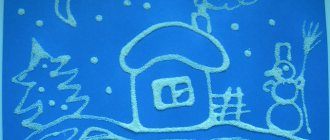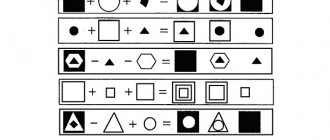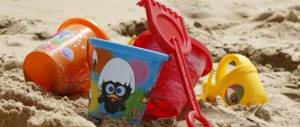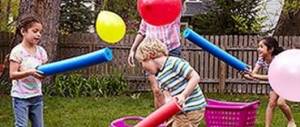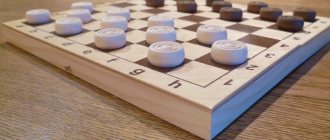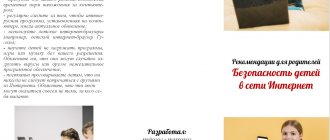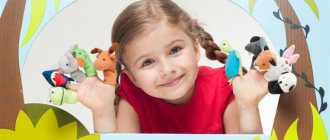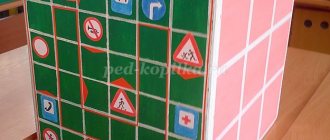Previously, I already talked about several useful games for developing sensorimotor skills in one-year-old children.
EDUCATIONAL GAMES FOR 1 YEAR OLD CHILDREN. PART 1 - READ
In this article you will find several more options for interesting activities for an entertaining and useful pastime with children.
So, here’s what you can play with a child from 1 year old:
Play with cereals, sand, water.
When walking on the playground in the warm season, do not pass by the sandbox. Playing with sand promotes the development of fine motor skills and also introduces the child to the basic physical properties of substances.
At home, you can also organize many interesting games with bulk substances; you can make a mini-sandbox or a sensory box (this is especially true in the cold season). In your homework, instead of sand, you can play with cereals: peas, millet, buckwheat, semolina. For a variety of tactile sensations, try to use several types of cereals.
Of course, it’s still too early to build Easter cakes at 1 year old; the baby is unlikely to find this activity interesting. What then to do in the sandbox? Here are some interesting game options:
- Show your child how to pour sand/cereals from one container to another . Small glasses, children's dishes, and sand molds are suitable for this purpose. The main thing is that the baby can comfortably grasp the dishes with one hand. The child, repeating after you, will learn to coordinate his movements.
- If you also use a small jug , then you will help the baby practice another very useful type of grip (the child holds only the handle, and not the entire container), which will diversify the baby’s sensory experience.
- Teach your child to “salt” your toy soup with sand (put your fingers together in a pinch and rub them against each other), this way you encourage your fingers to do fine work.
- Together with your baby, scoop up pour it out - it turns out to be gymnastics for the palm.
- Invite your child to pour the cereal/sand with a spoon from one container to another . Important: place the dishes in front of the baby so that he has to pour the cereal from left to right. In this way, we gradually prepare the hand for the correct position while writing.
- The baby can gain experience interacting with cereals and other bulk substances by playing with a variety of sensory boxes . Here is an example of one of those boxes (you will find other options here) that you can offer to a one-year-old baby. Pour any cereal into a container or bucket and hide small toys there so that only the edges are visible to the child. Invite your child to find toys . You can play similarly in the sandbox.
- And, of course, continue to practice using a scoop; together with your child, fill buckets and molds with sand/cereals.
How to play with water? From the age of 1 we just learn to pour water from one dish to another. The requirements for containers here are the same as in the game with bulk ones (read above).
What are the benefits of playing with cereals?
Playing with loose materials is very beneficial for young children. Starting from the age of one year, you can gradually introduce your baby to cereals. Keep a close eye on your child during these activities, as at first he will most likely put everything in his mouth and scatter cereals around the apartment. However, remember that even through such actions, your child is exploring the world around him, so do not rush to give up such games. Over time, the baby will learn to play calmly and focused. Experts say that playing with cereals contributes to the development of:
- Fine motor skills;
- Perceptions;
- Attention;
- Speeches;
- Imaginations.
M. Montessori believed that children aged 1.5 - 2.5 years enter a period of development when the perception of small objects occupies a special place. Playing with cereals calms kids down and develops their perseverance.
Learn to push objects (sorter, piggy bank and other useful items).
I previously mentioned these games in an article devoted to the development of sensorimotor skills from 9 months. From the age of 1 year, the sorter (My-shop, KoroBoom) becomes more and more interesting to the child. In addition to the fact that the baby is attracted to the “pushing” process itself, at this age he also begins to pay attention to the fact that not every figure will fit into any slot he chooses. Therefore, classes with a sorter are very useful for learning forms and improving motor skills. In this regard, it is worth noting that if you want to study geometric shapes using a sorter, when buying a sorter, pay attention to whether it contains basic shapes or whether it contains only stars and hearts.
The “pushing” skill (which, by the way, is very useful for developing coordination and motor skills) can also be practiced on other household items or toys that you can easily make yourself.
Option 1. On a small box (for example, children’s porridge), stick the face of your favorite character drawn by yourself or printed on a printer and make a slit in place of the mouth. Children, as a rule, really enjoy feeding these “boxed” friends with pasta. The more accurately the size of the slot corresponds to the diameter of the pasta being pushed, the better the baby’s motor skills will be practiced.
You can use two boxes with slots of different diameters. So, during a fun game, you will also reinforce the concepts of “big-small” and teach your baby to select an object by size.
Option 2. It is no less interesting to push various objects into a plastic bottle - it is transparent, it will be interesting for the child to watch how the object falls inside. As pushed objects, you can use nuts in shell (hazelnuts, almonds, peanuts), small pieces of foam rubber (cut up dishwashing sponge), pasta, hairpins, rubber bands and other small toys that fit the size of the hole in the bottle.
Option 3. Another fun activity is to push cotton swabs or cocktail tubes into the holes of a colander (it’s better to cut the tube into 2-3 parts in advance). It should be noted that sticks and tubes do not fit into all colanders. Therefore, this game is only for owners of colanders with large holes
Option 4. Invite the baby to play with the piggy bank . It’s better to immediately offer your child a separate, clean piggy bank, and also wash a few coins, so that you don’t have to wash your hands after each game with the piggy bank. Naturally, such a game needs to be carefully watched, because... Nothing good will happen if even a clean coin gets into the baby’s mouth.
Games with cereals for little ones (1-2 years)
Most babies enjoy playing with a variety of cereals. Let your child touch the cereal, show him an example of how to play with it:
- Transfer from container to container (with tweezers, hand or spoon);
- Hide and look for treasure in cereals;
- Throw into holes;
- Sift;
- Lay out paths;
Cereals can be a wonderful addition to toddlers' sensory boxes. Take a large transparent container and fill it with cereals of different shapes, sizes and colors, add some small toys. The baby will happily pick through the cereal, thereby developing fine motor skills. To prevent the grains from spilling out while playing, make holes in the lid of the container for your hands and close it.
The most popular filling for sensory boxes is rice. And colored rice causes genuine delight among children! To color rice, pour it into a bag, add 8-10 drops of food coloring and 1 tbsp. a spoonful of alcohol (to fix the color). Next, tie the bag and shake well so that the rice is evenly colored. Untie the bag and let the rice dry. In just half an hour we will receive wonderful sensory material.
Play with lacing
In stores, as a rule, there are two types of lacing. The most common ones are lacing (Ozone, Labyrinth, KoroBoom), which are a set of a flat picture (and sometimes a three-dimensional toy) with many holes and a lace with which the child must lace these same holes.
In another version of lacing (Ozone, Labyrinth, KoroBoom), instead of a picture with holes, there are many different details (these can be animals, fruits, vegetables) that need to be threaded onto the lace. As a result of playing with such lacing, you should get something similar to beads.
For a baby who is just beginning to master the art of lacing, in my experience, the second type of lacing is much better suited. Making beads for a child’s favorite toy is clearer and closer than threading a needle through numerous holes without any purpose. But it’s still too early to lace bananas to a palm tree (like our toy in the photo). Therefore, at this stage, I suggest you purchase lacing beads.
When my daughter and I just started mastering lacing (and Taisiya’s interest in lacing appeared around 1 year and 2 months), we played like this. I held the piece, directing the hole so that it would be convenient for my daughter to insert the lace into it. She took a wooden needle with a cord in one hand and inserted it into the substituted hole, then with the other hand she took out the end of the needle that appeared on the opposite side. When this movement began to work out well, I began to teach my daughter to independently hold the piece with one hand and push the needle with the other. After the needle was inserted into the hole, she needed to transfer the part to her other hand and use her free hand to reach the end of the needle. To my surprise, my daughter quickly mastered this skill, but at first it seemed to me that this task was very difficult for a one-year-old child.
For the first lacing, you can also try this option: take any ribbon that is not too long, and for stringing, use bagels (dryers) or rings from a pyramid . At the same time, also explain to your child that you are making beads for a bear, for example. The holes in the dryers are much larger than in the lacing parts, which makes the task easier for the baby. However, my daughter liked ordinary lacing much more, perhaps because it is more convenient to use a needle than a ribbon.
Games with cereals for children 2-6 years old
- Sorting. If your child is a little older, you can invite him to sort the cereals according to different criteria:
- Shape;
Blossom;
- Size;
- Tactile sensations.
- Drawing on semolina. To do this, you will need a bright surface (for example, a tray) with a small layer of semolina sprinkled on top. Together with your baby, you can leave marks with your fingers and draw patterns and simple stories.
- Application of cereals and pasta. In stores you can find pasta of different shapes and sizes. These can be bows, spirals, shells, etc. With their help, your child can make wonderful appliqués. For this you will need PVA glue, cardboard, plasticine, paints and brushes. Create a template for the applique in front of your child’s eyes (for example, draw a fish, a flower, the sun) and invite your child to add cereals or pasta to it. This is an excellent means of developing not only fine motor skills, but also imagination and creative abilities.
- Tactile bags, “capitoshki”. Fill small bags or balloons with various cereals and invite your baby to guess what's inside by touch.
- Lacing. Pasta tubes can become beads that are convenient to string on a string or skewer. Preschool children really like this activity; in addition, it perfectly develops the child’s fingers.
- Repeat the sequence. Place a sequence of different grains on the table and ask your child to repeat it. This game will help develop the child’s thinking.
- Learning to count. Small grains can be an excellent counting material for your child to always have on hand.
Roll the ball/ball along the slide/grooves.
Watching the balls roll down is a great way to train a child's eye muscles, and also gives the child a first understanding of the basics of the law of universal gravitation. And, of course, it’s just very exciting for kids to watch the balls roll.
For this game you will need to build a small slide from scrap materials; even a book will do for this purpose, but something bigger is better. The main thing is that the slide should not be too steep, otherwise the ball will roll down too quickly and it will be difficult for the child to keep track of it.
There is also a special toy for sale for this game, it is called Kugelban (My-shop, KoroBoom). The bowl is a structure with grooves along which balls and other figures roll. Invite your child to place the ball on the top track and see what happens next. Or you can release several balls one after another at once.
